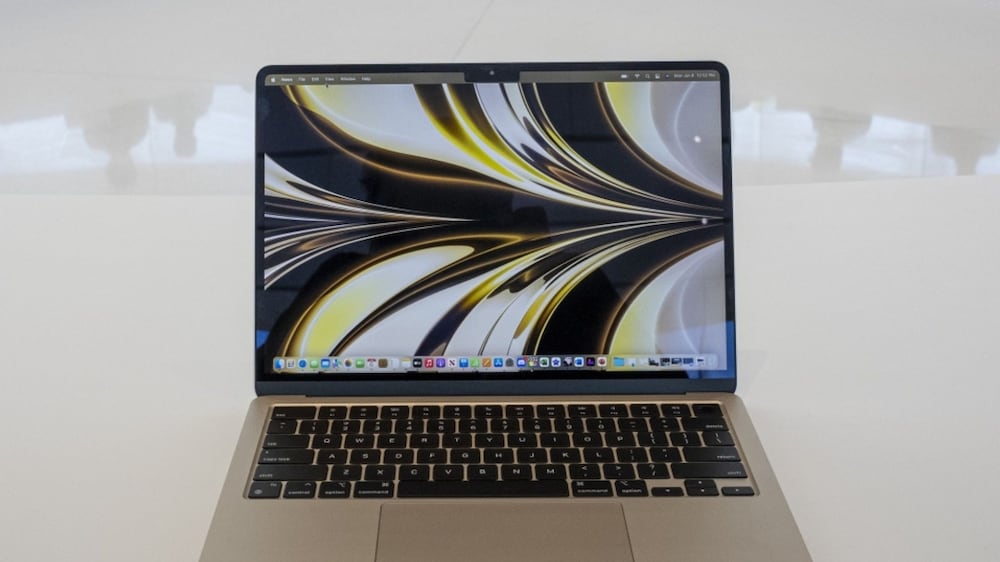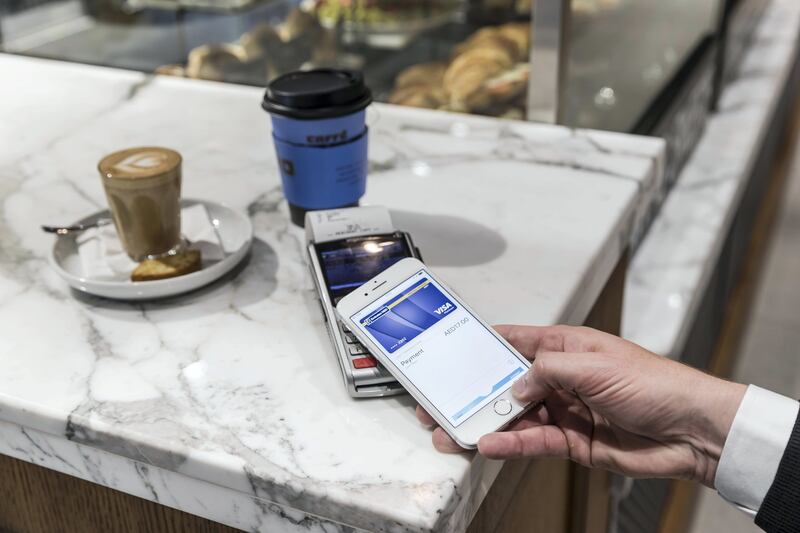Apple unveiled a new financial product that allows users to split the cost of an Apple Pay purchase into four equal payments over six weeks without being charged interest or late fees.
Apple Pay Later marks the iPhone maker's entry into the growing buy now, pay later (BNPL) industry.
The feature is built into Apple Pay and comes with the next version of the iPhone’s operating system, iOS 16, which will be released later this year, the Cupertino-based company said as it announced a range of product updates at the Worldwide Developers Conference event on Monday.
For now, it appears that only iPhone and Mac users in the US will be able to use Apple Pay Later. It remains unclear if it will be made available for Apple customers in the UAE.
“Users can apply for Apple Pay Later when they are checking out with Apple Pay, or in wallet,” the technology company said.
“Apple Pay Later is available everywhere Apple Pay is accepted online or in-app, using the Mastercard network.”
The BNPL business model, which allows consumers to make online purchases and spread out their interest-free repayments, has become more popular since the onset of the coronavirus pandemic.
Global BNPL transaction values stood at $120 billion in 2021 and were set to grow to $576bn by 2026, according to data analytics company GlobalData.
BNPL accounted for 2.3 per cent of the global e-commerce market. In other words, for every $100 spent, $2 went towards a BNPL transaction, the report found.
Millennials and Generation Z are the main demographic groups driving the adoption of the BNPL model, the research revealed.
“This rapid growth was down to an increasing number of merchants accepting these solutions. There have been some huge partnerships with e-commerce giants such as Amazon and Shopify, opening up a whole new world of consumers,” said Chris Dinga, a payments analyst at GlobalData.
The business model is booming, with Sweden’s Klarna, US-based Affirm and Australia's Afterpay offering flexible financing to consumers, according to the 2020 Global Payments Report by payment processor Worldpay Group.
Accenture estimates that the number of BNPL users in the US stood at 45 million in 2021.
"We’re thrilled to see Apple introduce Apple Pay Later in the US — an important step towards putting consumers first and validating that transparent split payments are here to stay,” Hosam Arab, co-founder and chief executive at Dubai-based BNPL provider Tabby, said. "However, predatory interest-ridden payment methods still remain at large."
Apple Pay users can pay the first payment upfront and the remaining three every two weeks. Payments are managed in the Wallet app and users can pay them in advance if needed, the iPhone maker said.
Apple Pay Later does not require any integration and works with a user’s Apple Pay, the company said. It requires no extra work from the developer or merchant side.
A wholly owned subsidiary called Apple Financing will oversee credit checks and make decisions on loans for the service, according to a Bloomberg report. The move marks the first time Apple is handling key financial tasks like loans, risk management and credit assessments.
“Designed with users’ financial health in mind, Apple Pay Later makes it easy to view, track and repay Apple Pay Later payments within the Apple Wallet app on iOS,” Apple said.
Apple Pay users can use a dashboard to monitor payments within the company's Wallet app, it said.
The overall impact of Apple's announcement should be limited in the short term, as relatively speaking, the market share of Apple Pay transactions is low, said Scott Harkey, executive vice president of financial services and payments at software development company Endava.
"For now, we don't see this driving meaningful volume away from established BNPL players," Mr Harkey said. "Apple has a fantastic record of launching products that start simple, but scale to be more complex over time, so banks and BNPL providers should keep an eye on these developments as Apple's brand power will eventually put some pressure on the leading players.”
Here are Apple's newest technologies from WDCC 2022

The company also unveiled Apple Pay Order Tracking, where users can receive detailed receipts and order tracking information in the Wallet app for Apple Pay purchases with participating merchants.
“The popularity of the [BNPL] sector is raising concerns from regulators. Since the release of the Woolard report by the Financial Conduct Authority in 2021, the FCA has been trying to bring the UK BNPL sector under its supervision,” Mr Dinga from GlobalData said.
“In February 2022, the FCA was able to force Klarna, Clearpay, OpenPay and Laybuy to change their terms and conditions so they are easier to understand.”
BNPL providers have been criticised for having misleading advertisements that fail to mention the risk customers face if they fail to repay their loans on time — as well as the impact those loans can have on their credit scores, the GlobalData report said.
“Due to the lack of transparency of BNPL loans, credit rating agencies … are unable to capture BNPL loans,” said Mr Dinga.
“This lack of reporting could lead to an inaccurate assessment of consumers’ creditworthiness and lead to them being over leverage on their loans [as they can be approved for loans with several BNPL loan providers at the same time].”







